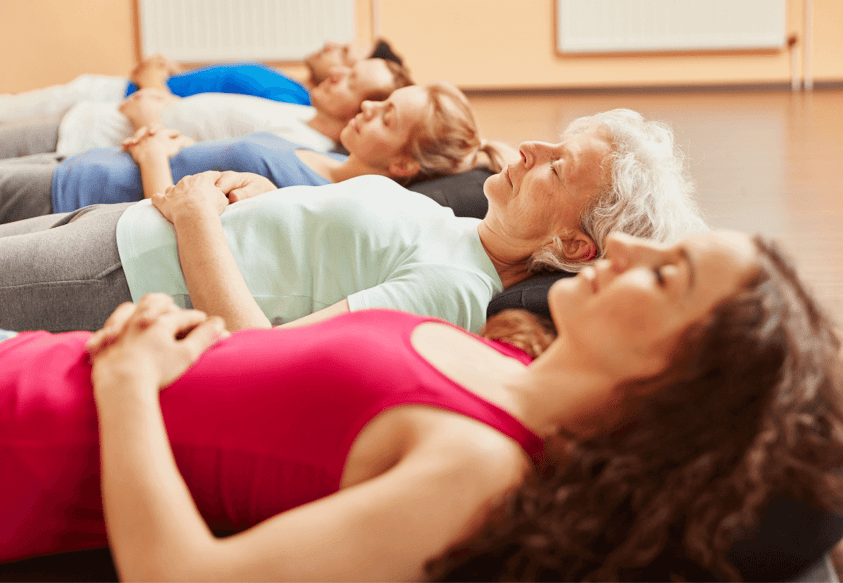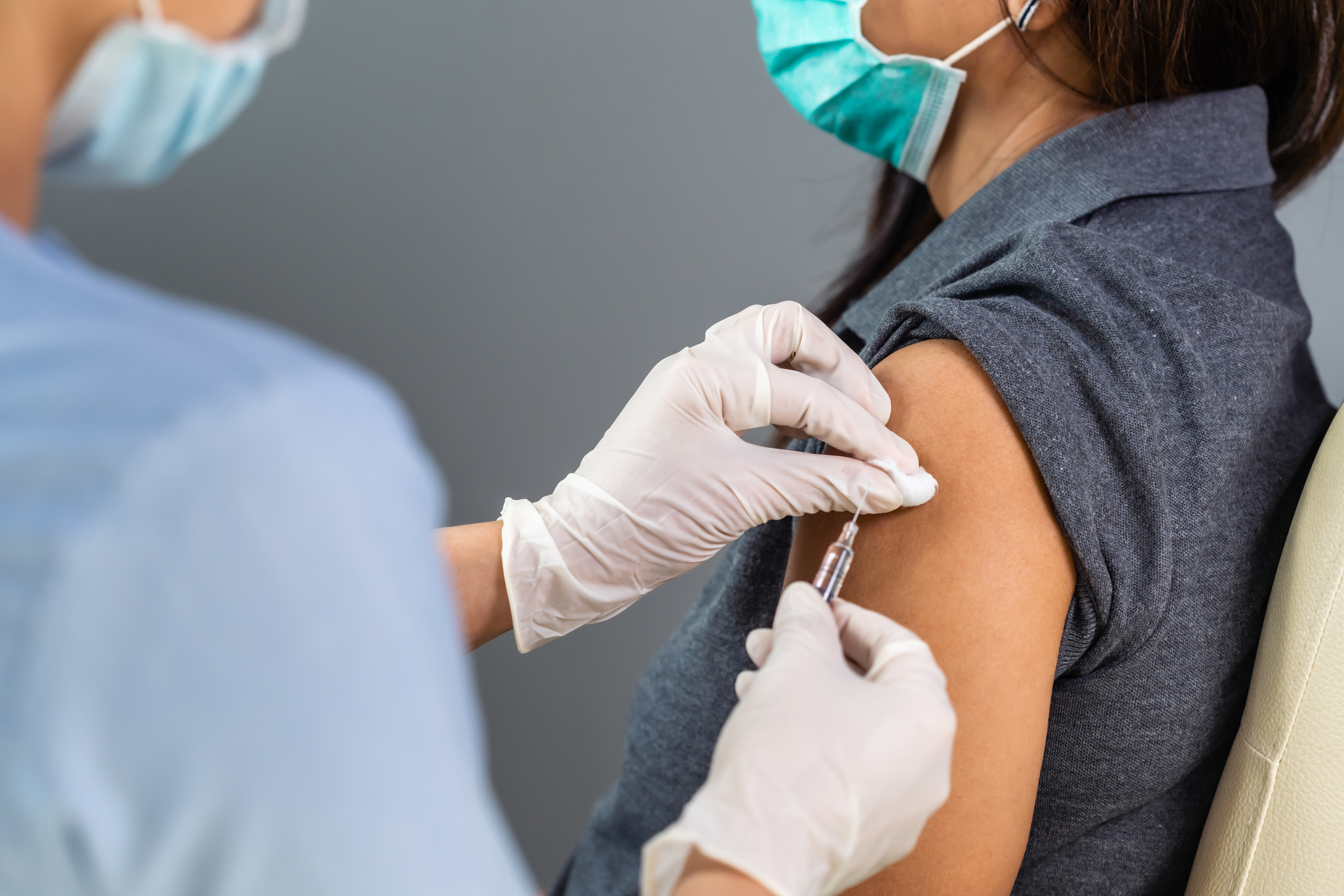As we continue to learn more about COVID and how it manifests in different people, we can try many different things to manage the symptoms. Two of those things being breathing and yoga.
Breathing exercises have been a core part of our COVID long haul program since launch. As a COVID long hauler, Monisha developed Yoga for COVID,™ which are yoga exercises for COVID Long Haul and post-COVID recovery for those still struggling with symptoms.
We spoke to Monisha about the program and how it came to be.
Can you tell us about yourself and why you became a yoga teacher?
Monisha: I was born and raised in India and I basically started my yoga practice when I was 5, which means I’ve been practicing yoga for 45 years! Yoga was part of the curriculum and every day we had a yoga class in school. It became a big part of my life. I moved to America in 1990 to study fashion design, which is what I do now. I have a vegan footwear brand which I built, that is rooted in the main yoga principle of Ahimsa or nonviolence. All the products are vegan - no animals or people were exploited in the process. I continued to practice my yoga, and in 2000 I felt a deeper need to study yoga even though I never imagined I was going to become a yoga teacher. I was pursuing my career in fashion. I did my training at Sivananda, in Kerala, India and when I returned to New York, I began teaching at the Sivananda Center there. I’ve been teaching ever since, so close to 20 years. Around two years ago I realized there was a need for yoga in the West as it is taught and practiced in India. The way yoga is often taught here is mainly focused on exercise, which is not how I practice it or what I grew up with. I continued to teach the way I practice yoga, and more and more students started coming to my classes. It’s grown from there.
This form of yoga you teach and practice is known as hatha yoga. Can you please describe it?
Monisha: Hatha yoga is a slower, more mindful practice, incorporating breath and meditation. You could describe it as “a moving meditation.” The student practitioner is encouraged to draw the senses in, to become centered and rooted, and grounded in the body. The practice of hatha yoga, of getting your body in a physical position, and maintaining it without jumping to the next position, puts the focus on the breath. It’s really important to bring the breath in with every movement and focus on the breath. Unlike some western approaches to yoga, which can be very fast, hatha yoga really focuses on your inner power to grow by becoming aware of your body and coming into deep communion with the self through each posture. Each posture acts as a kind of acupressure and reflexology where you’re pushing into certain spots in the body. Different postures stimulate different organs in the body, and open different energy channels. This is the deep purpose in yoga. It’s not just about exercising and burning calories.
Now you teach a class called Yoga For COVID. How did the idea for the class come about?
I’ve been practicing hatha yoga all these years and I am also trained in therapeutic yoga, which is even more restorative. I would work with clients who had physical disabilities or were going through health issues and experiencing fatigue, so I would help them using restorative postures. Last year, I got COVID and was just debilitated with fatigue. I couldn’t do a whole lot, but I was able to continue my yoga practice. My doctor checked in with me on weekly video calls. My throat and lungs were not affected at all, and I had no symptoms of any kind related to congestion. He was very surprised because most patients were exhibiting those symptoms. He strongly believed this was due to my yoga practice and started sending me his patients to work with. He told me that I should be teaching this since most people don’t know how to breathe properly. It was my doctor who first said that if COVID patients learned how to breathe properly and calm their nervous system, it would be a huge help for them. And he pushed me to start teaching this class.
Can you tell me a little bit more about what makes the Yoga for COVID class specific for post-COVID recovery? What are you doing differently?
Monisha: I wanted to gear this class toward COVID patients who were exhibiting ill health due to congestion in their lungs. I heard that doctors were propping up their patients and leaning their hospital beds back which is, in fact, the worst position if you have fluids or congestion in the lungs. In yoga, we usually do a lot of inversions, which is excellent because it allows the lungs to drain. But when you’re sick and don’t have the energy, asking people to get into a headstand or even in a downward dog position, is challenging. In the class, I’m taking asanas and modifying them using props to bring very restorative postures into the practice. I guide people on how to prop themselves up using blankets or cushions, to help open mostly the back of the lungs, as well as the front. When we take a deep breath, we imagine our lungs are located mostly in the front of our body, but 70% of our lungs are actually wrapped around the back body, around the ribcage. These positions focus on opening and expanding the ribcage, increasing volume and lung capacity.
Mymee also works with people that struggle with common autoimmune diseases and chronic symptoms like fatigue, which sound similar to what you’re describing. Could this class be beneficial for them as well?
Monisha: I think this is a practice anyone can do to connect with the breath and reduce stress by working with the nervous system. Learning how to breathe deeply and properly is so basic. When you watch babies sleeping or animals who are still in touch with their instincts, you can see how they breathe when they’re sleeping: the belly naturally expands as they inhale, and when they exhale, it collapses. But most people today breathe the opposite way due to the stress of modern living, and because we aren’t taught how to breathe properly. In our day to day lives, we are only using 1/6 of our total lung capacity, which can reach a total volume of six liters. The restorative postures in my yoga class help to open the body and it takes time, since these postures are also maintained for 3-5 minutes. Holding the positions for longer allows the body to go into deeper relaxation. The nervous system starts to calm down. We’re activating the parasympathetic nervous system, which is responsible for healing and restoration, and which starts to calm down the sympathetic nervous system. That’s the reactive part, the fight or flight part, which we engage in most of the time in modern living. So while I’m teaching this mostly geared to COVID patients, really anyone can benefit.
Do you have any words of advice or encouragement for someone who might be thinking about trying yoga for the first time?
Monisha: I believe yoga is for everyone. There is no one in the world who cannot do yoga. And yoga doesn’t mean just the physical posture. Yoga is coming into full balance, with mind, body and spirit. There is science behind it. Science is only validating now what the yogis have been practicing for thousands of years. I’m currently collaborating with a researcher and a scientist on how yoga works against infectious diseases, and how we can maintain health by practicing yoga. And the different pranayamas - the breathing exercises - are really so simple. I’m just teaching the basics of that in my class and everyone can do it. Pranayama is just correcting the patterns of breathing which affect the flow of air, and also messaging to the brain. In the class, I talk a little bit about the science, biology and physiology of yoga, to explain why we’re doing what we’re doing so people can understand it. But you don’t even have to understand why in order to benefit, because yoga works, no matter what.
Thank you Monisha. Is there anything else you’d like people to know about the class, or any parting words?
Monisha: Yes, I want to add that I start my yoga classes with “Om,” and close the class with “Om” and a peace mantra, “om shanti.” This is sound-based healing, and helps us go deeper in our practice.
I would like people to know not to lose hope. While I had COVID and symptoms like mild conjunctivitis, fever that would come and go, body aches and joint pain, I had no lung issues, no sinus issues, the pipes were clear. When I began teaching patients, they were getting better within two weeks. The patients who came to me started practicing daily. I gave them a few exercises, such as pranayama breathing techniques, and within two weeks they were making remarkable recovery. Some continue to come to my class today as this practice is wonderful in bringing a sense of calm and stability to the whole system.
Learn more about Monisha's Yoga for COVID here.


